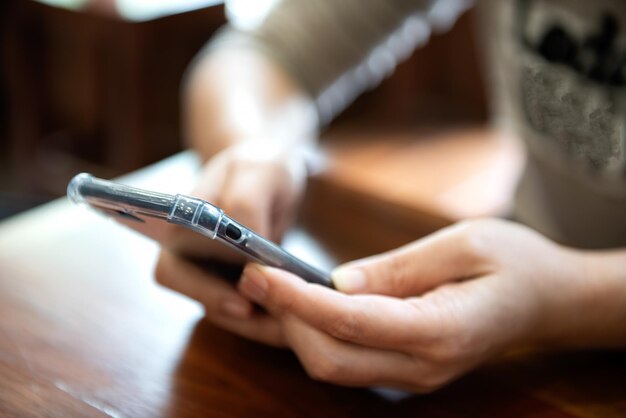Effortlessly Transition: Transfer Your Landline to a Cell Phone 📞➡️📱
In an age where mobility is key, tethering ourselves to a landline feels increasingly outdated. Whether you're looking to cut costs, improve convenience, or streamline communication, transferring your landline to a cell phone is an appealing option. Let's explore how you can do this smoothly, transforming traditional telephony into a mobile conversation hub.
Why Transfer Your Landline to a Cell Phone?
Transferring from a landline to a cell phone isn't just a trend—it's a practical decision for many. Here’s why this move can be beneficial:
- Cost-Effectiveness: Why pay for two phone services when one will suffice?
- Mobility: No more running to answer the phone—take your calls wherever you are.
- Feature-Rich Experience: Leverage the advanced features of smartphones, from caller ID to voice mail.
- Decluttering: Eliminate unnecessary wires and hardware.
Exploring the Transmission Process
Transitioning from a landline to a cell phone might sound daunting, but it's manageable with the right steps.
Step 1: Check for Portability
Before anything else, ensure your landline number can be transferred. Not all numbers are portable, so verification is crucial.
- Contact Your Provider: Reach out to both your current landline provider and prospective cell phone carrier.
- Verify Number Portability: Use online tools or carrier support to check if your number can be ported.
Step 2: Choose Your Cell Phone Plan
Once portability is confirmed, decide on a cell phone plan that meets your communication needs.
- Assess Usage Patterns: Consider how often you call, text, or need data.
- Evaluate Carrier Options: Compare different carriers for coverage, pricing, and customer service.
- Select a Suitable Plan: Choose a plan offering the right mix of talk, text, and data.
📋 Key Considerations:
- Network coverage in your area
- Monthly costs
- Plan perks (e.g., international calling options)
Step 3: Initiate the Transfer
Initiating the number porting process is straightforward but requires careful attention to detail.
- Provide Necessary Information: Have your current account details, including the phone number and account number, ready.
- Submit a Porting Request: Fill out any forms or online submissions with the new cell carrier to start the porting process.
- Keep Communication Lines Open: Stay in touch with your cell carrier to track progress.
Step 4: Confirm the Transfer
Once the request is submitted:
- Await Confirmation: This can take anywhere from a few hours to several days.
- Test the Transition: Once transferred, call your number to ensure it rings on your new cell device.
- Finalize with Old Carrier: Contact your old carrier to confirm the account closure.
Tips and Tricks for a Smooth Transition 🚀
Ensuring a seamless transfer requires attention to detail and some smart strategies:
- Plan Ahead: Begin the process when disruptions to phone service will minimally impact you.
- Backup Contacts: Store important contacts in your new phone or a digital backup to prevent data loss.
- Inform Important Contacts: Notify family, friends, and work contacts of your new setup.
- Test Early: Make test calls after transition to ensure everything is working as planned.
Common Questions and Concerns
Can I transfer a disconnected landline number?
- Porting a disconnected line is often impossible. Ensure your landline is active before starting the process.
Will my old landline features carry over?
- While basic calling features transfer, specific landline features might not be available (e.g., existing voicemail).
Can I port an international number?
- Generally, no. Porting is typically limited to the local number within the same country.
Potential Challenges and Solutions
Despite best efforts, certain complications might arise in the porting process. Here are some potential issues and how to address them:
Delay in Transfer
- Solution: Stay in contact with your new carrier for updates and troubleshoot potential issues swiftly.
Billing Confusions
- Solution: Keep your billing alignments clear, confirming closure or updates with both carriers.
Miscommunication with Carriers
- Solution: Clarify every detail and maintain records of your interactions for future reference.
Embracing the New Age of Communication
Transferring your landline to a cell phone offers more than just technological upgrades; it aligns your communication updates with today’s mobile-first lifestyle.
📝 Quick Summary:
- Verify Portability: Ensure your number can be transferred.
- Select the Right Plan: Find a cell plan that fits your needs.
- Submit the Porting Request: Carefully follow provider instructions.
- Confirm and Enjoy: Test functionality and notify important contacts.
Empowering Your Connectivity
Taking charge of how you communicate begins with understanding your options and executing thoughtfully planned transitions. Whether for personal convenience or professional necessity, transferring from landline to cell ensures you remain connected in a way that matches today’s dynamic and flexible lifestyle. 📞✨
Embark on this tech-savvy journey today and redefine what it means to be connected!

Related Topics
- How Can I Transfer Data From One Laptop To Another
- How Can I Transfer Domain To Godaddy
- How Can I Transfer My Calls To Another Phone
- How Can I Transfer Pdf To Word
- How Can We Transfer Data From One Laptop To Another
- How Can You Transfer Data From One Phone To Another
- How Can You Transfer Emails From One Account To Another
- How Can You Transfer Vhs Tapes To Dvd
- How Do I Transfer a Prescription From Walgreens To Cvs
- How Do I Transfer Data From Ipad To Ipad